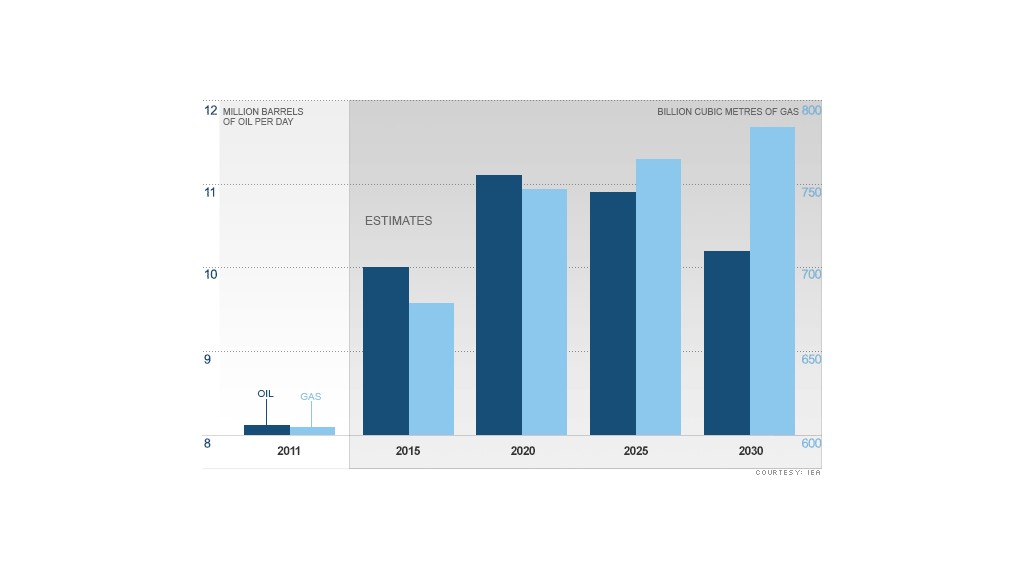
The United States will overtake Saudi Arabia to become the world's biggest oil producer before 2020, and will be energy independent 10 years later, according to a new forecast by the International Energy Agency.
The recent resurgence in oil and gas production, and efforts to make the transport sector more efficient, are radically reshaping the nation's energy market, reported Paris-based IEA in its World Energy Outlook.
North America would become a net exporter of oil around 2030, the global organization said Monday.
"The United States, which currently imports around 20% of its total energy needs, becomes all but self sufficient in net terms -- a dramatic reversal of the trend seen in most other energy importing countries," the IEA stated.
The U.S. is experiencing an oil boom, in large part thanks to high world prices and new technologies, including hydraulic fracking, that have made the extraction of oil and gas from shale rock commercially viable.
From 2008 to 2011, U.S. crude oil production jumped 14%, according to the U.S. Energy Information Administration. Natural gas production is up by about 10% over the same period.
Related: the facts about oil and gas under Obama
According to the IEA, U.S. natural gas prices will rise to $5.5 per million British thermal units (MBtu) in 2020, from around $3.5 per MBtu this year, driven by rising domestic demand rather than a forecast increase in exports to Asia and other markets.
"In our projections, 93% of the natural gas produced in the United States remains available to meet domestic demand," it said. "Exports on the scale that we project would not play a large role in domestic price setting."
North America's new role in the world energy markets will accelerate a change in the direction of international oil trade toward Asia, and underscore the importance of securing supply routes from the Middle East to China and India.

The IEA said it expects global energy demand to increase by more than a third by 2035, with China, India and the Middle East accounting for 60% of the growth, and more than outweighing reduced demand in developed economies.
That will push world average oil import prices up to $125 per barrel (in 2011 dollars) by 2035, from around $100 per barrel at present, but they could be much higher if Iraq fails to deliver on its production potential.
Iraq is set to become the second largest oil exporter by the 2030s, as it expands output to take advantage of demand from fast growing Asian economies.
Related: Iraq oil output to double by 2020
New fuel economy standards in the U.S. and efforts by China, Japan and the European Union to reduce demand would help to make up for a disappointing decade for global energy efficiency.
"But even with these and other new policies in place, a significant share of the potential to improve energy efficiency -- four-fifths of the potential in the buildings sector and more than half in industry -- still remains untapped," the IEA stated.
Policymakers are still missing out on potential benefits for energy security, economic growth and the environment.
Growth in demand over the years to 2035 would be halved and oil demand would peak just before 2020, if governments took action to remove barriers preventing the implementation of energy efficiency measures that are already economically viable, the global organization said.


